My Rod and Jig Combinations
Here is my fleet of rods. I have a Studio Ocean Mark L50Hi loaded with PE3.0 and one more Ocea Jigger 2000NR-HG loaded with PE2.5 but it’s under overhaul now.
From the left…
- Slow Jerker 603-3 and Shimano Jigger LD 2000 (CCM Power Handle) with Super Fireline Colored #1.5 and Seaguar FXR #10 leader
- Slow Jerker 603-4 and Shimano Jigger LD 2000 (CCM Power Handle) with Super Fireline Colored #1.5 and Seaguar FXR #12 leader
- Slow Jerker 603-6 and Shimano Ocea Jigger 2000NR-HG (SOM Carbon Handle) with Super Fireline Colored #2.0 and Seaguar FXR #12 leader
- Highpitch Jerker 600 and Studio Ocean Mark L120Hi with Super Fireline Colored #2.5 and Seaguar FXR #12 leader
I change the rod and reel match sometimes. When I need the lifting power in the heavy water situations, OJ2000 and L50Hi are the ones I trust. I choose the rod for my desired action tone, and I put one of these reels on it.
Or, sometimes I want to use my lightest line, PE1.5, so I put Jigger LD on the desired rod.
But shown in above picture is pretty typical combinations I use.
My main field is about 100m to 130m deep. Sometimes 170m to 230m. Or 70m to 90m.
I fish on a boat with a spanker sail and the captain controls the drift to keep us vertical.
Light Water and Heavy Water
The water resistance is substantially changes the action tone. It is very important that anglers always pay attention to this water resistance which changes constantly, and change our setup accordingly.
>> How to select the rod, the jig and the jig weight?
When I say “light water” or “heavy water”, the factors that determine the degree of water resistance are as follow.
- water depth
- multi layered currents
- how vertical you are with the jig
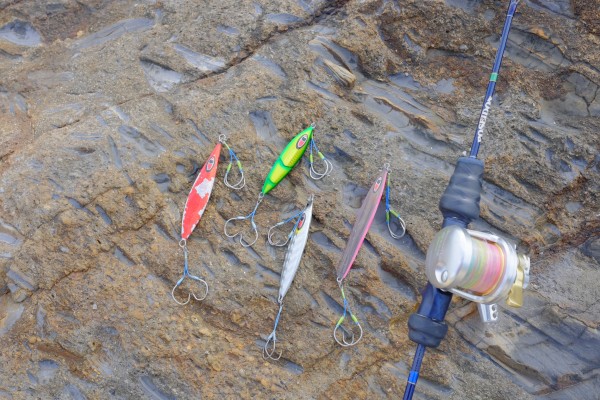
Here’s an example of jig match for 603-3.
From the left…
- Rector 180g (medium action tone)
- Cranky 140g (strong action tone)
- Gawky 220g (soft action tone)
- Arc 180g (medium action tone)
This is the kind of setup I often use for 70m to 90m of water. Targeting groupers, breams and emperors.
603-3 will only be used in soft action tone in deeper water because the rod is just not strong enough to kick up against the water resistance. I still use this rod in over 100m deep with Gawky 220g and 260g, Abyss 230g and 260g, Arc 230g and 260g for fall tactics.
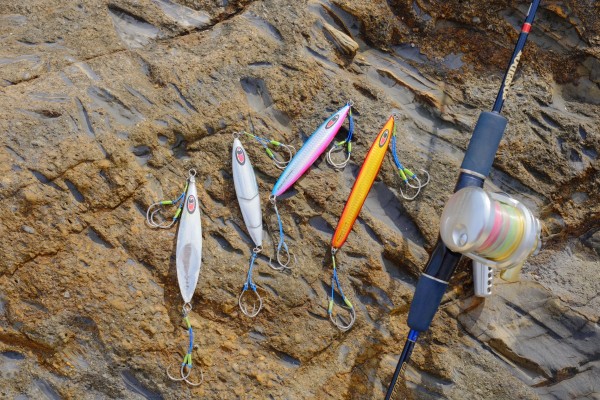
Here’s an example of jig match for 603-4.
From the left…
- Rector 210g (medium action tone)
- Cranky 230g (medium / soft action tone)
- Abyss 230g (medium / soft action tone)
- Arc 230g (medium / soft action tone)
This is the setup I frequently use in my main field around 100m. It allows me the most various actions and tactics. I can also use Spunky 150g, 180g, Rector 180g, or Arc 170g for more energetic actions in light water situations. I also use Gawky 300g and Abyss 260g in heavy water situations.
Notice that slow pitch jigging uses heavier jigs than conventional high-speed jigging. One of the reasons is that slow pitch jigs are center balanced and generally slow to fall. That’s why it’s effective in falls. But it also means that the initial drop takes more time and may put you out of the vertical alignment easily. The other reason is that unlike high-speed jigging in which your action constantly move the jig, slow pitch jigging allows more time for the jig to swim and fall on its own. You are lifting for a 1/3 of time, and in the other 2/3 of time the jig is on its own. The initial idea of slow pitch jigging is to maximize that time of the jig swimming and falling on it’s own. With that 1/3 of time you give the jig the energy to move on its own for the rest of the time. You need the rod to bend deep and spring back to do that. To get that action and the rhythm going with the rod, you need certain heaviness in your jig. If you have too light jig or too stiff rod, one action ends so quickly that you need to give the next action right away.
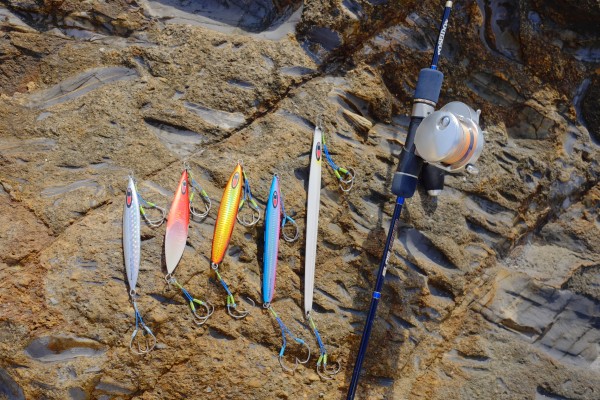
Here’s an example of jig match for 603-6.
From the left…
- Spunky 210g (strong / medium action tone)
- Rector 240g (medium action tone)
- Abyss 260g (medium / soft action tone)
- Arc 260g (medium / soft action tone)
- Messiah 260g (medium / soft action tone)
I frequently use 603-6 in over 100m deep area too. When the water is heavy, or when I want to do energetic actions, it is such an ideally balanced rod.
I can use 603-6 in shallower water just like 603-4.
Messiah is a high pitch jig and it swims for the longest distance when given strong impact. I don’t put on the rear hooks when I use it with high pitch rod (strong action tone). But 260g is medium action tone with 603-6. I put on the rear hooks and emphasize the slow lift and fast falls. It’s effective for big groupers, especially when the water is heavy.
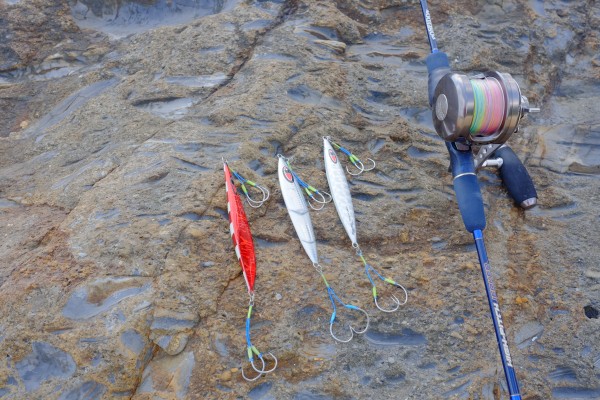
Here’s an example of jig match for Highpitch Jerker 600.
From the left…
- Rector 300g (medium action tone)
- Cranky 320g (medium action tone)
- Spunky 300g (medium action tone)
600 can a very reliable heavy slow pitch rod, when I want to make energetic actions in heavy water situations.
I find it too heavy to make rod actions under my elbow. I have it under my armpit so that the range of motion is limited. But I can make some punchy uplift actions with it.
>> Map the rod actions on the clock
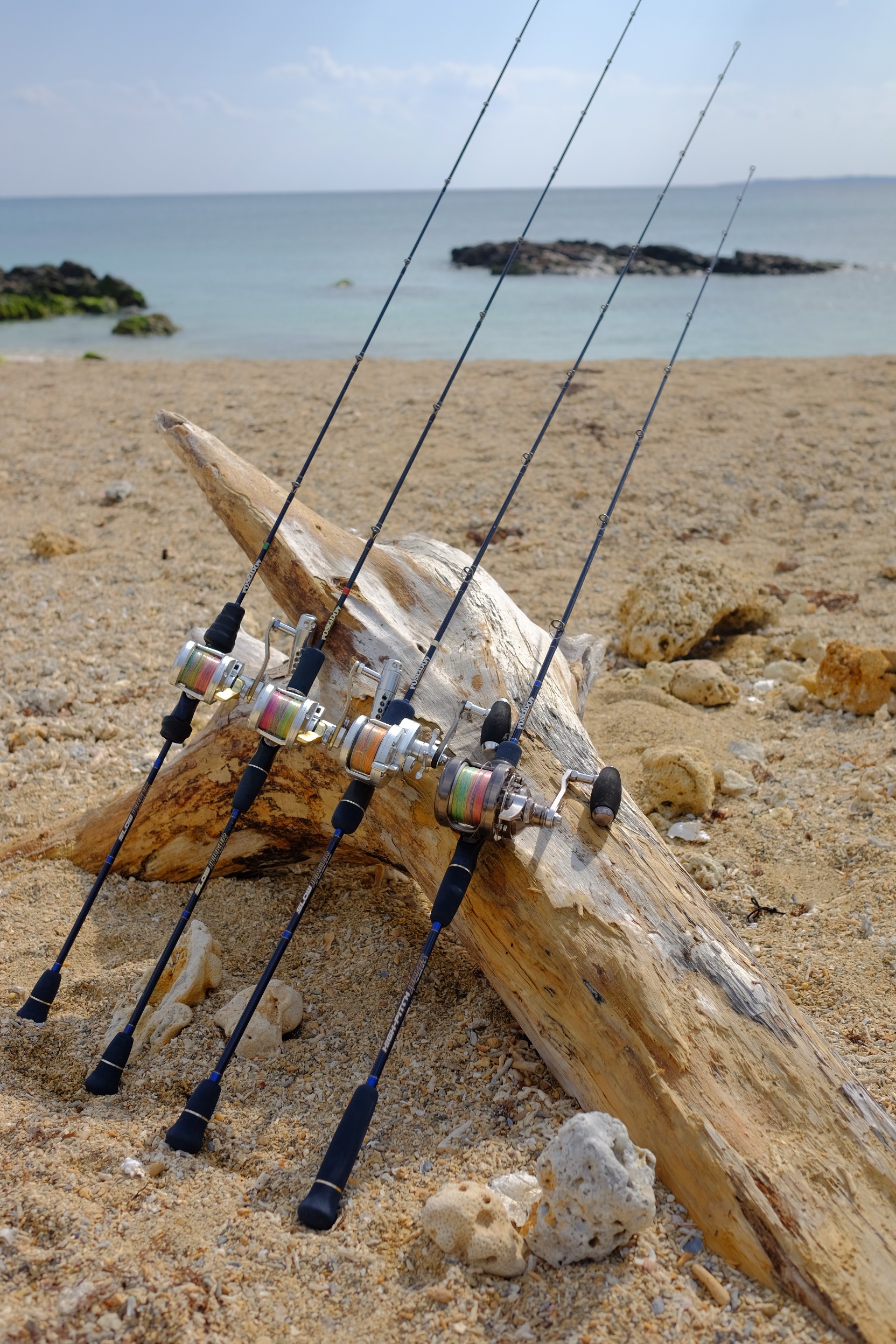
Hope this information helps you!
Related Posts
2 Comments
Leave a Reply Cancel reply
Categories
- 1. SPJ (57)
- 1-1. Principles (9)
- 1-2. Techniques (11)
- 1-3. Setup (17)
- 1-4. FAQ (19)
- 1-5. Tackles (3)
- 1-6. Video Gallery (2)
- 2. Other Offshore Games (5)
- 3. Fishing Report (105)
- 3-1. Totos (25)
- 3-2. Readers (72)
- 4. Fish Cooking (19)
- 4-1. Iki-Jime (3)
- 4-2. The Art of Sashimi (5)
- 4-3. Recipe (7)
- 4-4. Seasoning (3)
- 5. Fishing Charter (6)
- Fish (12)

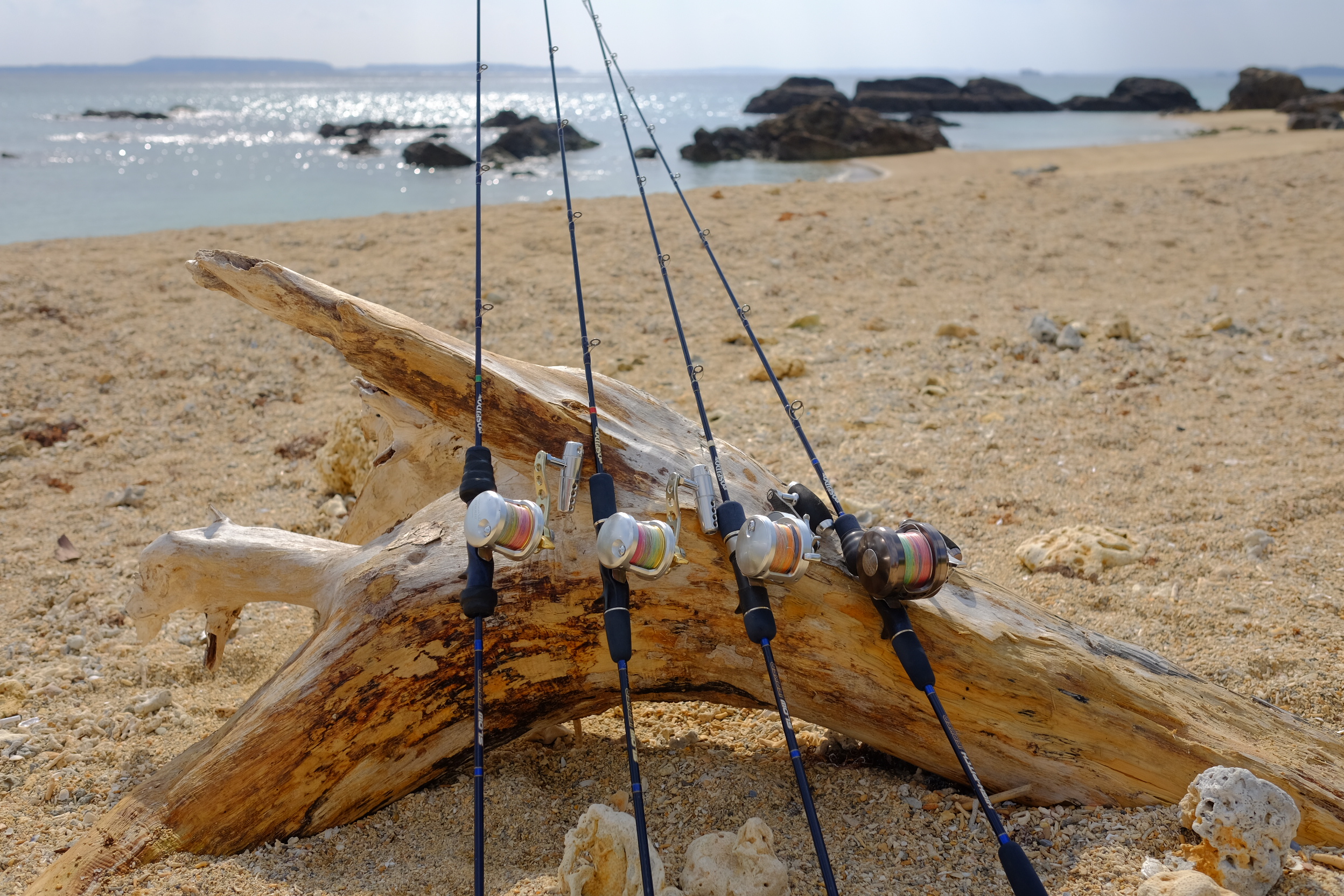
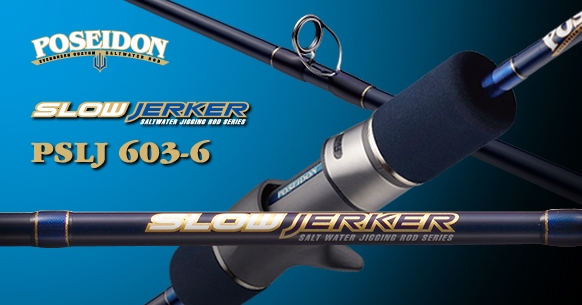
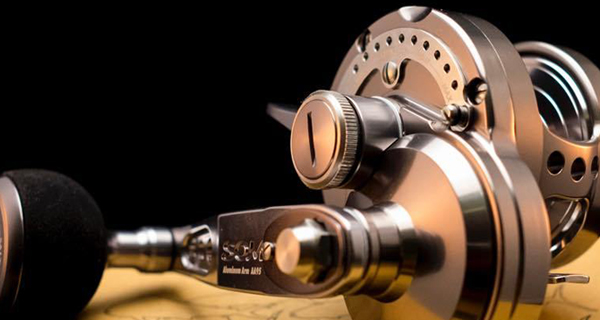
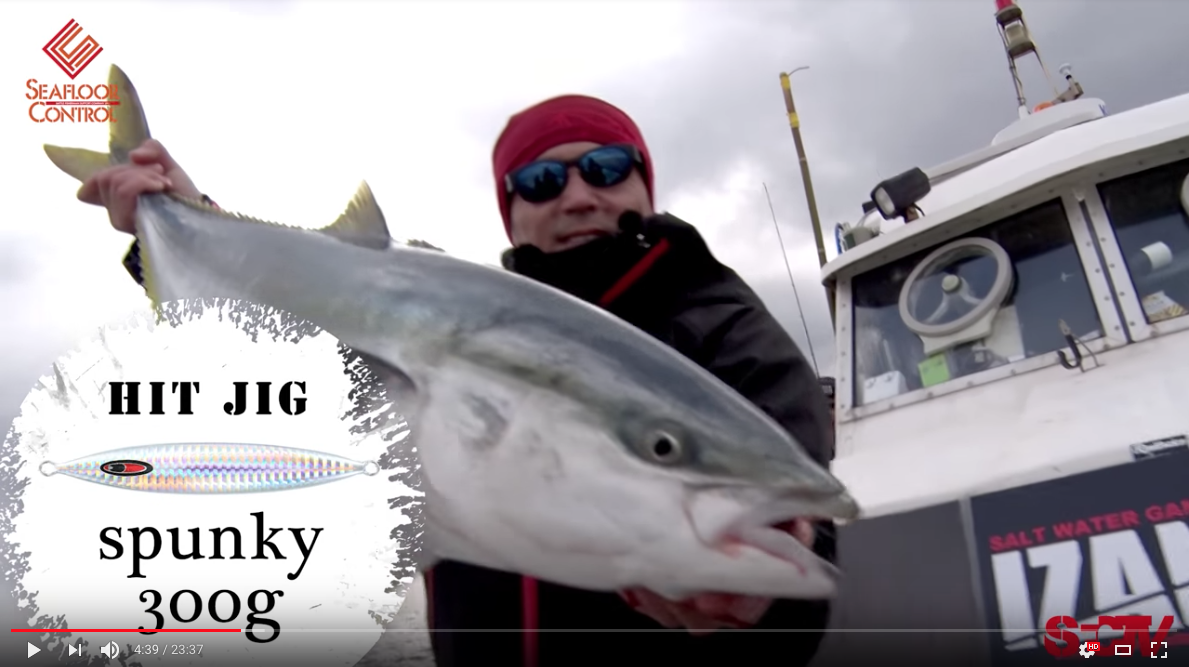
Poor gawky… he’s been left out
Mmmmmmm! SOM120H MMMMMMMMM!